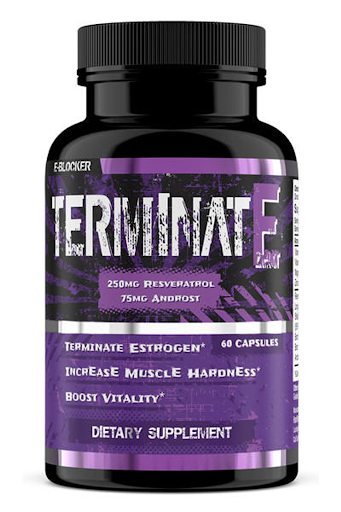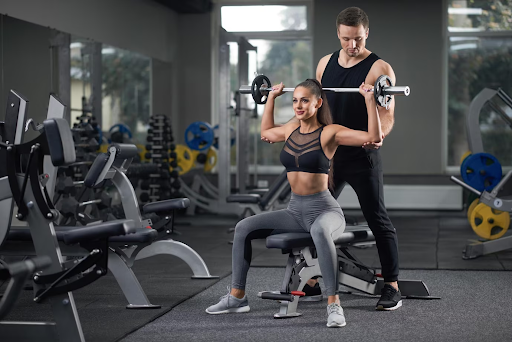Estrogen blockers, often considered a hot topic in both medical and non-medical circles, play a crucial role in various aspects of health and well-being. Whether you are a medical professional seeking to prescribe the right treatment for a patient, an athlete aiming to optimize performance, or an individual embarking on a gender transition journey, the choice of an estrogen blocker is a decision that should not be taken lightly. This article is designed to guide you through the complex terrain of selecting the best estrogen blocker for your specific needs.
The purpose of this article is to provide you with a comprehensive understanding of estrogen blockers and the factors you should consider when choosing the most suitable option. We will explore the different types of estrogen blockers, their purposes, potential side effects, dosages, legal and ethical considerations, and the importance of consulting with healthcare professionals. By the end of this article, you will be equipped with the knowledge needed to make informed decisions about estrogen blockers, whether for medical treatment, performance enhancement, or gender transition.
Table of Contents
Understanding Estrogen Blockers
When it comes to finding the best estrogen blockers, it’s crucial to begin with a solid understanding of what they are and how they function. Estrogen blockers, often used in various contexts for their unique properties, play a significant role in managing hormonal balance. Let’s delve into the world of these compounds.
What Are Estrogen Blockers?
At their core, estrogen blockers are substances designed to modulate the levels of estrogen in the body. Estrogen, a primary female sex hormone, plays essential roles in both genders. However, there are instances where controlling its effects becomes necessary.
Estrogen blockers function by interfering with the body’s estrogen receptors or production, thereby either reducing estrogen’s impact or preventing it from binding to its receptors. This can have various implications based on the specific purpose and context of usage.
Types of Estrogen Blockers
Now, let’s explore some common types of estrogen blockers, each with its unique mechanism of action and applications:
- Selective Estrogen Receptor Modulators (SERMs): SERMs are a class of compounds that can act as either estrogen agonists or antagonists, depending on the tissue in which they are active. They are frequently used in medical settings to treat conditions like breast cancer, osteoporosis, and menopausal symptoms. SERMs include drugs like tamoxifen and raloxifene.
- Aromatase Inhibitors: Aromatase is an enzyme responsible for converting androgens (male hormones) into estrogen. Aromatase inhibitors block this conversion process, reducing estrogen production. They are commonly used in breast cancer treatment and in bodybuilding circles to manage estrogen-related side effects of anabolic steroid use. Notable examples include anastrozole and letrozole.
- GnRH Agonists: Gonadotropin-Releasing Hormone (GnRH) agonists work by initially increasing the release of certain hormones, which ultimately leads to a reduction in estrogen and testosterone levels. These drugs find use in managing conditions like prostate cancer and endometriosis.
- Herbal and Natural Estrogen Blockers: Some herbal and dietary compounds, like soy isoflavones and flaxseed, contain phytoestrogens, which are plant-derived compounds that can either mimic or block estrogen’s effects in the body. While they are less potent than pharmaceutical options, they are preferred by individuals seeking a more natural approach to hormonal balance.
Why are Estrogen Blockers Used?
Estrogen blockers serve various essential purposes across different domains, making them a versatile tool in healthcare and beyond. Understanding the reasons behind their usage is crucial when considering the most appropriate estrogen blockers for specific needs.
1. Bodybuilding and Athletic Performance
In the realm of fitness and sports, estrogen blockers are employed for several reasons:
- Minimizing Estrogen-Related Side Effects: Anabolic users may experience estrogen-related side effects like gynecomastia (enlarged breasts in males) and water retention. Aromatase inhibitors are used to prevent or alleviate these effects, helping athletes maintain a more desirable physique.
- Enhancing Muscle Definition: By reducing water retention and subcutaneous fat due to estrogen, athletes and bodybuilders can achieve a leaner, more defined physique. This is particularly relevant in the lead-up to competitions.

It’s important to note that while estrogen blockers can be beneficial in these contexts, their usage should always be under the supervision of a healthcare provider. Individual responses to these medications vary, and healthcare professionals can monitor hormone levels and adjust treatment accordingly to ensure safety and efficacy.
Factors to Consider When Choosing an Estrogen Blocker
When embarking on the journey of choosing the best estrogen blocker, there are several critical factors that demand your careful consideration. These factors will help you make an informed decision tailored to your unique circumstances and goals.
Health and Medical History
- Existing Medical Conditions: Before selecting an estrogen blocker, take stock of your existing medical conditions. Some health issues may interact adversely with certain blockers or necessitate specific types of blockers. Conditions like cardiovascular disease, liver problems, or a history of blood clots may require a different approach.
- Medications and Allergies: Your current medications and any allergies you have should also influence your choice. Some drugs may interact unfavorably with estrogen blockers, while allergies could lead to adverse reactions. Ensure you discuss these aspects with a healthcare professional to mitigate potential risks.
Purpose of Usage
- Performance Enhancement: Athletes and bodybuilders seeking performance enhancement through estrogen reduction must carefully consider the legality and ethical implications of their choice. Be aware that certain types of blockers may be banned in sports organizations.
Potential Side Effects
- Short-Term vs. Long-Term Effects: Understanding the difference between short-term and long-term effects is vital. Short-term side effects may include nausea or hot flashes, while long-term effects can be more severe, such as bone density reduction. Weigh the benefits against potential long-term risks when making your choice.
- Risks and Benefits: Consider the risks and benefits of each estrogen blocker option. Some may have a lower risk of certain side effects but be less effective at estrogen reduction. Your healthcare provider can help you navigate these trade-offs based on your health profile.
- Consultation with a Healthcare Professional: Perhaps the most crucial factor is seeking professional guidance. Consult with a healthcare provider who specializes in hormone-related issues. They can assess your health history, medications, and individual needs to recommend the most suitable estrogen blocker.
Dosage and Administration
- Proper Dosage Guidelines: Strictly adhere to proper dosage guidelines. Deviating from prescribed doses can lead to suboptimal results or increased risks of side effects. Always follow your healthcare provider’s instructions diligently.
- Timing and Frequency: Understand the timing and frequency of dosage. Some blockers must be taken at specific times, such as with or without food, to optimize their efficacy. Deviating from these instructions may impact their performance.
Commonly Used Estrogen Blockers
When it comes to estrogen blockers, various options are available, each with its own mechanisms and considerations. Understanding the most commonly used types and comparing their effectiveness and safety is essential for making an informed choice.
List of Popular Estrogen Blockers
- Selective Estrogen Receptor Modulators (SERMs): SERMs, such as Tamoxifen and Raloxifene, work by binding to estrogen receptors in specific tissues. They can act as estrogen agonists in some areas (e.g., bone) while blocking estrogen in others (e.g., breast tissue).
- Aromatase Inhibitors: Aromatase inhibitors, including Anastrozole, Letrozole, and Exemestane, target the enzyme aromatase, which converts androgens into estrogen. By inhibiting this enzyme, they reduce overall estrogen levels in the body.
- GnRH Agonists: Gonadotropin-Releasing Hormone (GnRH) agonists like Leuprolide and Goserelin suppress the production of estrogen by temporarily reducing the signals to the ovaries or testes. They are often used in gender transition and certain medical conditions.
- Herbal and Natural Estrogen Blockers: Some individuals prefer herbal and natural options, such as black cohosh, chasteberry, or flaxseed, which may have mild estrogen-blocking properties. However, their efficacy varies, and they may not be as potent as pharmaceutical options.
Comparing Effectiveness and Safety
Efficacy in Estrogen Reduction
- SERMs are effective at reducing estrogen activity and are often used in breast cancer treatment and prevention.
- Aromatase inhibitors are highly effective in reducing estrogen levels and are commonly used in breast cancer treatment, especially in postmenopausal women.
- GnRH agonists are powerful in suppressing estrogen and testosterone production, making them crucial in gender transition and managing conditions like endometriosis.
- Herbal and natural blockers may have a milder effect and may not be suitable for individuals requiring significant estrogen reduction.
Side Effect Profiles
- SERMs can have side effects like hot flashes, mood swings, and an increased risk of blood clots. Long-term use may also affect bone density.
- Aromatase inhibitors may cause joint pain, osteoporosis, and mood changes. They are typically used in postmenopausal women due to their side effect profile.
- GnRH agonists may lead to hot flashes, mood changes, and a reduction in bone density. These side effects are typically reversible upon discontinuation.
- Herbal and natural blockers tend to have fewer reported side effects but may not be as effective as pharmaceutical options.
User Experiences
- Personal experiences with estrogen blockers can vary widely. Some individuals may tolerate one type better than another or may experience different side effects.
- Sharing experiences and seeking support from online communities or support groups can provide valuable insights into how others have navigated the use of estrogen blockers.
Consultation with Healthcare Professionals
Seeking guidance and expertise from healthcare professionals is a fundamental step when considering estrogen blockers. This consultation ensures that your choices align with your health goals and medical needs, promoting safety and effectiveness.

The Role of Doctors and Specialists
Healthcare providers play a pivotal role in your journey with estrogen blockers, providing essential guidance and expertise.
Importance of Medical Guidance
- Healthcare professionals, including primary care physicians, endocrinologists, oncologists, and gynecologists, possess the expertise to evaluate your health status comprehensively. They consider your medical history, existing conditions, and medications to recommend the most suitable estrogen blocker. Their guidance helps prevent adverse interactions and optimizes treatment outcomes.
Seeking a Professional Opinion
- When contemplating estrogen blockers, it’s crucial to seek a professional opinion. Schedule consultations with specialists who can assess your specific needs. For instance, individuals considering blockers for gender transition should consult with gender-affirming healthcare providers who specialize in hormone therapy.
Discussing Options and Risks
Open communication with healthcare providers is essential to ensure you fully understand your choices and the associated risks.
Open Communication with Healthcare Providers
- Engage in open and honest conversations with your healthcare provider. Share your goals and concerns, and don’t hesitate to ask questions. Your provider can explain the potential benefits and risks of each estrogen blocker and address any uncertainties you may have.
Informed Decision-Making
- Armed with the knowledge and insights from your healthcare provider, you can make informed decisions. Understand the implications of each option and weigh the benefits against the potential risks. Your healthcare provider can assist you in aligning your choice with your health and well-being goals.
Conclusion
In conclusion, the decision to choose the best estrogen blocker is a multifaceted and consequential one, impacting various aspects of health and well-being. This article has comprehensively explored the intricacies of selecting the right estrogen blocker, from understanding their types and purposes to evaluating potential side effects and consulting healthcare professionals.
Estrogen blockers, whether used for medical treatment, or performance enhancement, demand careful consideration. Your health and medical history, the purpose of usage, potential side effects, and dosage guidelines all play vital roles in making an informed choice. Equally crucial is the guidance of healthcare professionals who can provide expert opinions, ensuring that your decision aligns with your individual needs and goals.





